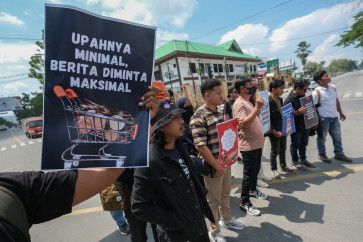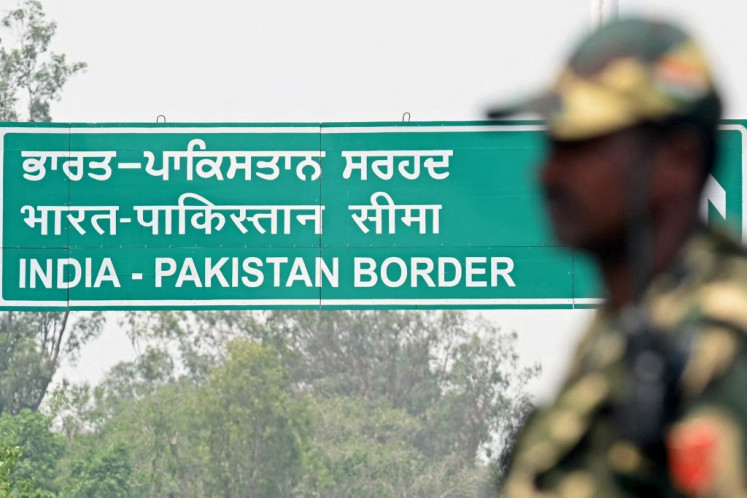Ministry prepares for student boom
The Culture and Education Ministry is seeking to build up to 6,000 new schools nationwide by 2019 in order to exponentially increase the participation rate of students in junior high and high schools
Change text size
Gift Premium Articles
to Anyone

T
he Culture and Education Ministry is seeking to build up to 6,000 new schools nationwide by 2019 in order to exponentially increase the participation rate of students in junior high and high schools.
The ministry's director general of elementary and secondary education, Hamid Muhammad, said that the establishment of new schools, 92 percent of which would be secondary schools, would be accompanied by the establishment and renovation of school facilities, such as new school laboratories and libraries, in order to accommodate the additional 6.4 million students who will be in school from 2015 to 2019.
'Although we have tried to speed the development of secondary education since 2011, the existing regulations and the available funds were not complementary at the time ['¦] our current target for 2020 is a 97 percent participation rate [in junior high and high schools],' he said during a discussion at the ministry's headquarters in South Jakarta.
'Furthermore, if we look at the National Mid-Term Development Plan [RPJMN], you can see that the 2019 goal is a 93 percent participation rate.'
Hamid added that the project was estimated to cost Rp 60.9 trillion (US$4.7 billion).
According to the ministry's official data, the participation rate in public and Islamic secondary schools was 75.53 percent by September this year.
The same data also notes that by September, 3.2 million students had graduated from junior high school but only 1.7 million students enrolled in high school. Hamid noted that there were children whose educational progress could not be detected by the ministry.
Hamid emphasized the importance of increasing and repairing facilities and infrastructure as the regulation on 12-year compulsory schooling had been in force since the beginning of the 2015-2016 academic year.
'There was an increase of 400,000 students this year [from last year] and for a while many [education] agency heads were overwhelmed. However, if we calculate it, it comes up to around 5.26 percent and this is on target. If we continue this way then the 2019 goal is achievable,' he said.
Totok Amin Soefijanto, an education consultant for the Education Sector Analytical and Capacity Development Partnership (ACDP) Indonesia, said that most of those who did not continue their education were from the lower economic class.
'There are many reasons behind it, namely the economic factor and also the perceived correlation between education and work. Many families in Indonesia need their children to help with labor, whether that be in farming or fishing. These same families also tend to question the effectiveness of education in creating larger work opportunities,' he said.









